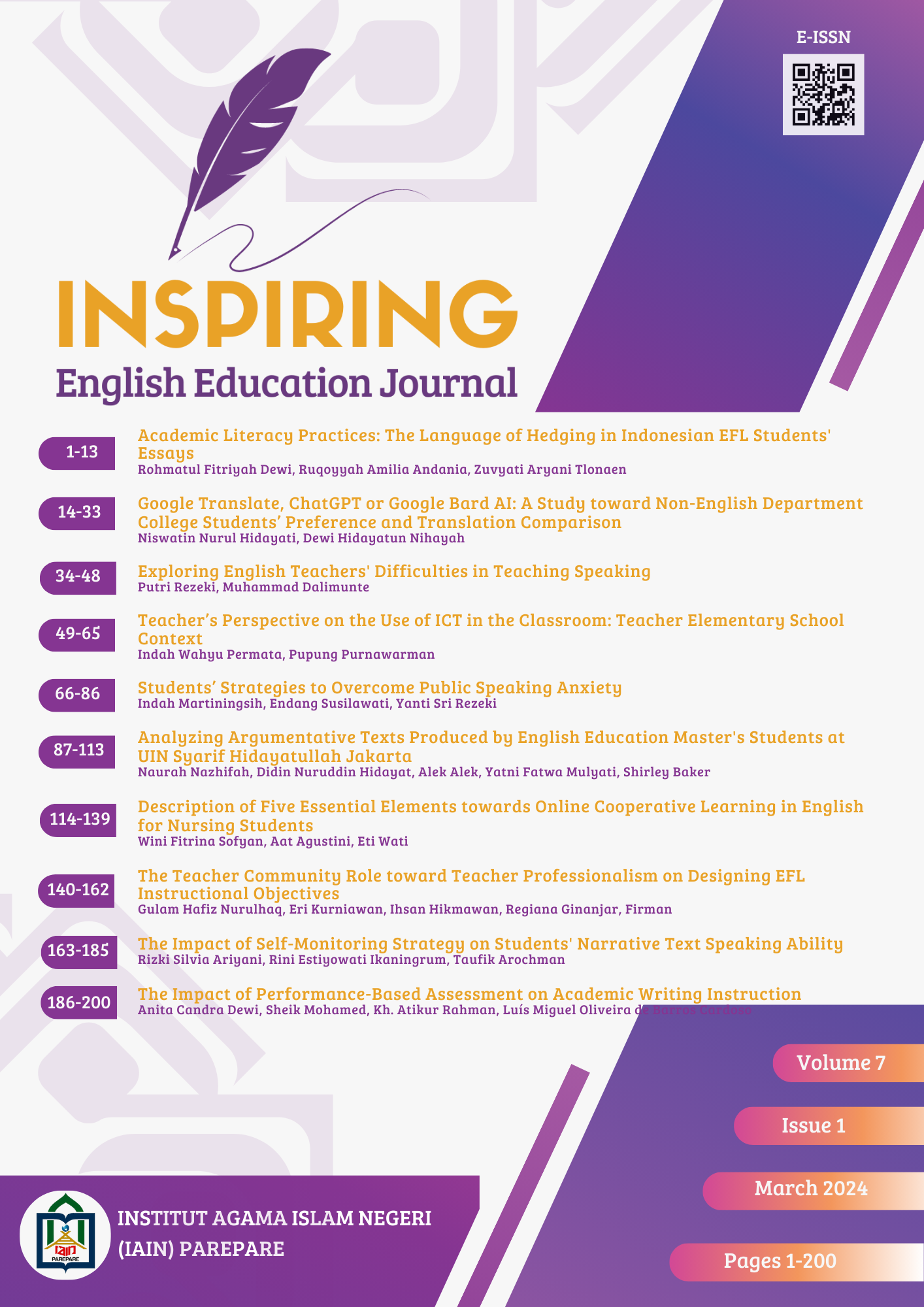Main Article Content
Abstract
The landscape of translation tools has evolved significantly, with an increasing reliance on artificial intelligence (AI) systems for various tasks. This study investigated the changing preferences among college students, especially those majoring outside of English departments, regarding the translation of abstracts from international journal articles. Besides, the authors also compared the translation results of Google Translate, ChatGPT and Google Bard AI. This research used qualitative research. The research results showed that the students prefer using AI such as ChatGPT or Google Bard AI. Moreover, whether the users used Google Translate, ChatGPT or Google Bard AI, the translation results showed that they were included in SL emphasis category.
Keywords
Article Details

This work is licensed under a Creative Commons Attribution-ShareAlike 4.0 International License.
References
- Arif Muttaqin Rusadi, Harris Hermansyah Setiajid. Evaluating The Accuracy Of Google Translate And Chatgpt In Translating Windows 11 Education Installation Gui Texts To Indonesian: An Application Of Koponen’s Error Category. English Language & Literature International Conference. https://jurnal.unimus.ac.id/index.php/ELLIC/index
- Fitria, Tira Nur. (2021). Gender Bias in Translation Using Google Translate: Problems and Solution. LANGUAGE CIRCLE: Journal of Language and Literature, 15(2) April 2021.
- Karl Griffith. (2020). Google Translate and Translation Quality: A Case of Translating Academic Abstracts from Thai to English. PASAA Volume 60 July - December 2020
- Koponen, M. (2010). Assessing Machine Translation Quality with Error Analysis. MikaEL : Electronic Proceedings of the KäTu Symposium on Translation and Interpreting Studies, 4, 1–12
- Mildred L. Larson. (1998). Meaning-based Translation. A Guide to Cross-Language Equivalence-University Press of America.
- Muallim, M., Mujahidah, & Daulay, R. (2023). UNFOLDING TRANSLATION STRATEGY AND IDEOLOGY IN LITERARY WORK. Inspiring: English Education Journal, 6(1), 1-11. https://doi.org/10.35905/inspiring.v6i1.4172
- Munawir. (2021). The Source Of Error in Translation. Inspiring: English Education Journal, 4(2), 119-132. https://doi.org/10.35905/inspiring.v4i2.2620
- Napitupulu, Sependi. (2017). ANALYZING INDONESIAN-ENGLISH ABSTRACTS TRANSLATION IN VIEW OF TRANSLATION ERRORS BY GOOGLE TRANSLATE. International Journal of English Language and Linguistics Research Vol.5, No.2, pp.15-23, April 2017.
- Newmark, P. (1988). A Textbook of Translation. New York: Prentice-Hall International.
- Zaidi, Abdelali and Hanane Bennoudi. (2023). AI vs. Human Translators: Navigating the Complex World of Religious Texts and Cultural Sensitivity. International Journal of Linguistics, Literature and Translation ISSN: 2617-0299 (Online); ISSN: 2708-0099 (Print) DOI: 10.32996/ijllt
References
Arif Muttaqin Rusadi, Harris Hermansyah Setiajid. Evaluating The Accuracy Of Google Translate And Chatgpt In Translating Windows 11 Education Installation Gui Texts To Indonesian: An Application Of Koponen’s Error Category. English Language & Literature International Conference. https://jurnal.unimus.ac.id/index.php/ELLIC/index
Fitria, Tira Nur. (2021). Gender Bias in Translation Using Google Translate: Problems and Solution. LANGUAGE CIRCLE: Journal of Language and Literature, 15(2) April 2021.
Karl Griffith. (2020). Google Translate and Translation Quality: A Case of Translating Academic Abstracts from Thai to English. PASAA Volume 60 July - December 2020
Koponen, M. (2010). Assessing Machine Translation Quality with Error Analysis. MikaEL : Electronic Proceedings of the KäTu Symposium on Translation and Interpreting Studies, 4, 1–12
Mildred L. Larson. (1998). Meaning-based Translation. A Guide to Cross-Language Equivalence-University Press of America.
Muallim, M., Mujahidah, & Daulay, R. (2023). UNFOLDING TRANSLATION STRATEGY AND IDEOLOGY IN LITERARY WORK. Inspiring: English Education Journal, 6(1), 1-11. https://doi.org/10.35905/inspiring.v6i1.4172
Munawir. (2021). The Source Of Error in Translation. Inspiring: English Education Journal, 4(2), 119-132. https://doi.org/10.35905/inspiring.v4i2.2620
Napitupulu, Sependi. (2017). ANALYZING INDONESIAN-ENGLISH ABSTRACTS TRANSLATION IN VIEW OF TRANSLATION ERRORS BY GOOGLE TRANSLATE. International Journal of English Language and Linguistics Research Vol.5, No.2, pp.15-23, April 2017.
Newmark, P. (1988). A Textbook of Translation. New York: Prentice-Hall International.
Zaidi, Abdelali and Hanane Bennoudi. (2023). AI vs. Human Translators: Navigating the Complex World of Religious Texts and Cultural Sensitivity. International Journal of Linguistics, Literature and Translation ISSN: 2617-0299 (Online); ISSN: 2708-0099 (Print) DOI: 10.32996/ijllt

